New York City subways
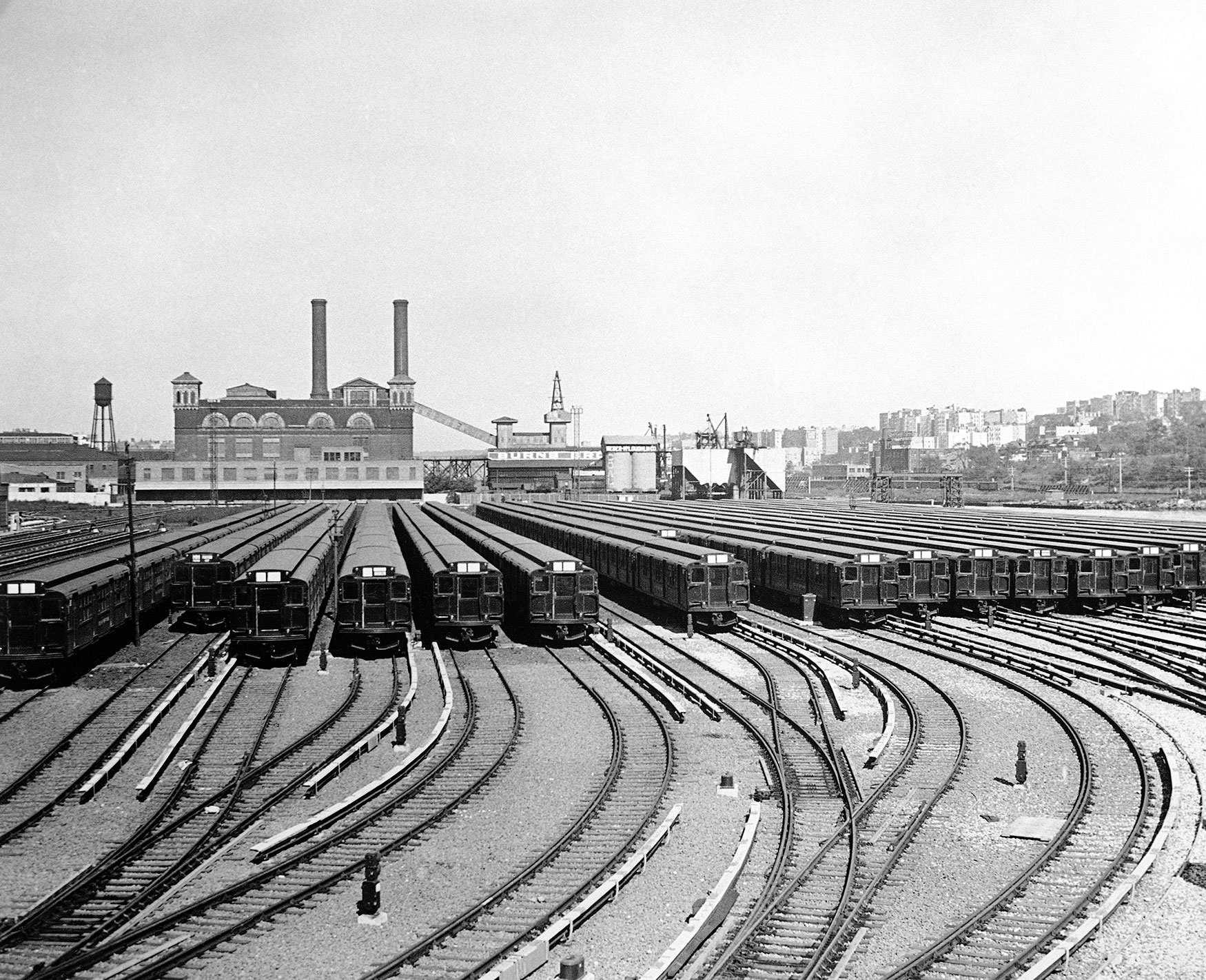
The following excerpt is from an AP story released on Oct. 27, 1904.
New York’s great underground railroad, the latest step in the movement toward rapid transit for the old city, was formally declared open and ready for business today. The last shovelful of earth had been turned, the last rivet set, and the roadbed, rails and cars and mechanism had been inspected and pronounced in perfect condition by experts who had watched the growth of the subway from the beginning to its completion.
The ceremonies connected with the opening of the tunnel, which were set to take place in the afternoon, were very simple. A civic celebration was planned to be held in the City Hall, where addresses were to be delivered by Mayor McClellan and men who have had a prominent place in carrying out the enterprise, and where the Mayor would formally declare the great tunnel ready for the public.
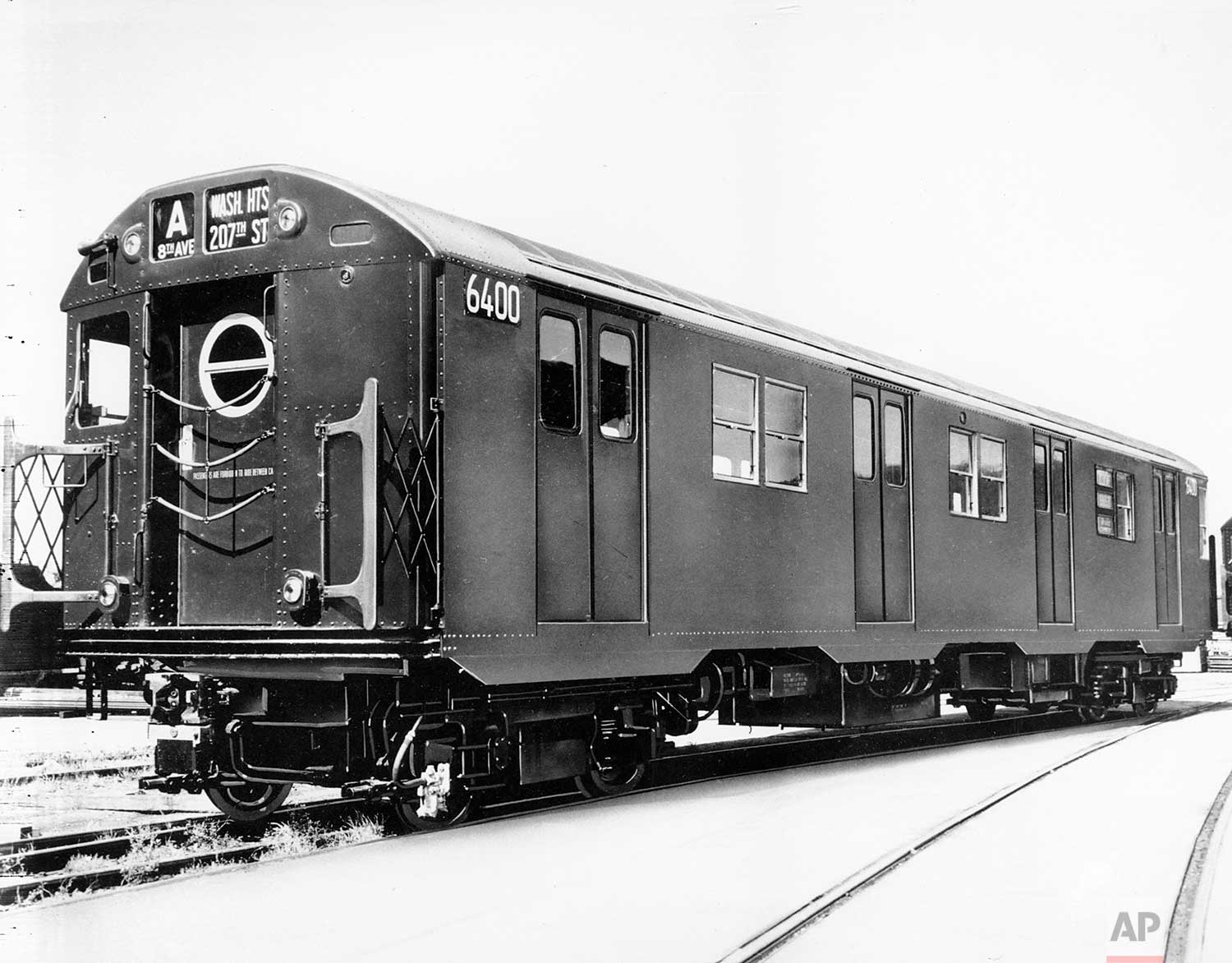
This is an undated photo of a New York City subway car, the "A" train. (AP Photo)
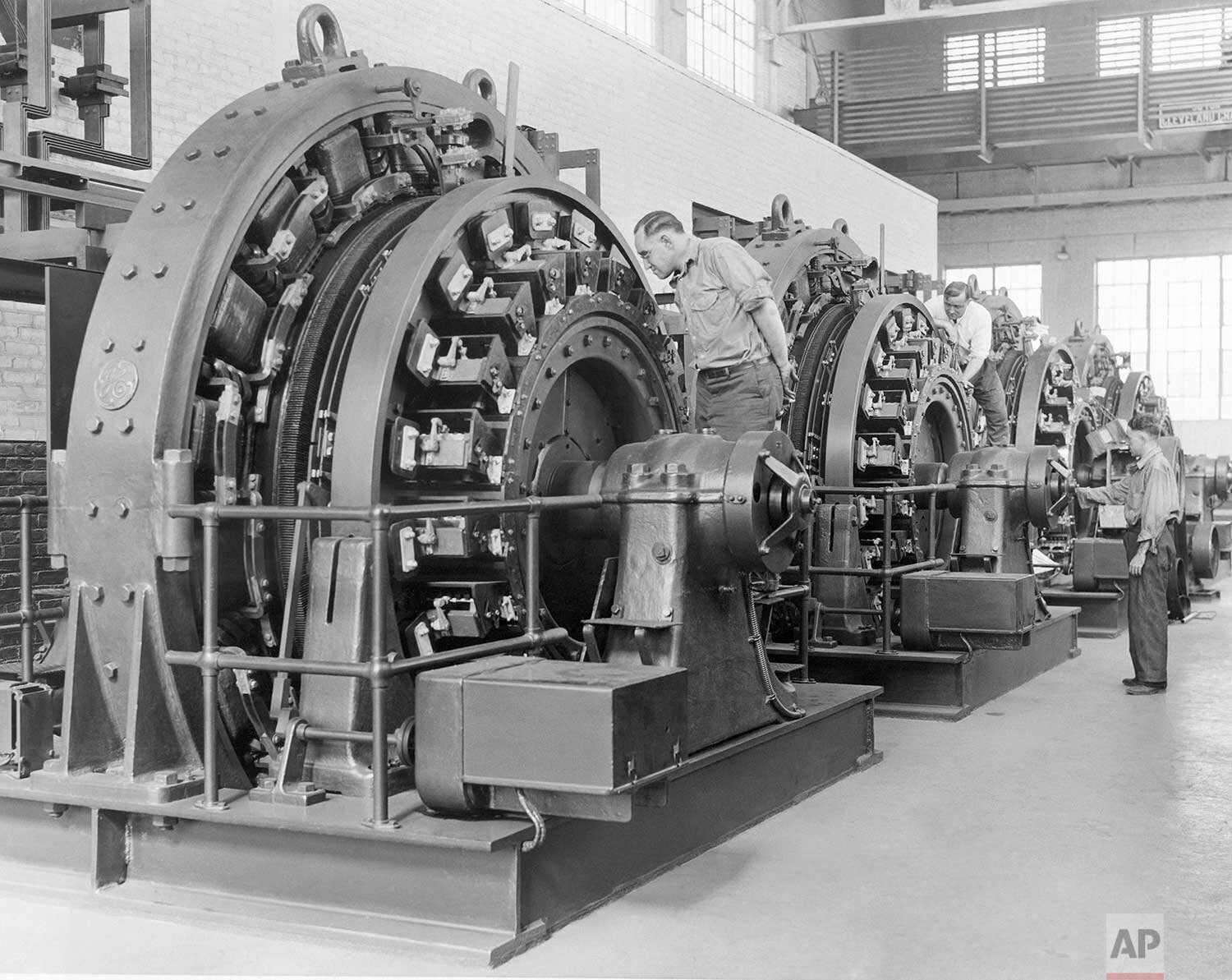
This four-rotary converters will produce 12,000 kilowatts when they are put into action for the running of the new Eighth Avenue subway system completed in New York, Oct. 13, 1931. Although the ventilating system of the new subway has not yet been finished, the line is expected to go into operation soon. Inspectors are shown watching the converters. (AP Photo)

Steel cars for the new 8th Avenue subway in New York, in May 1937. (AP Photo)
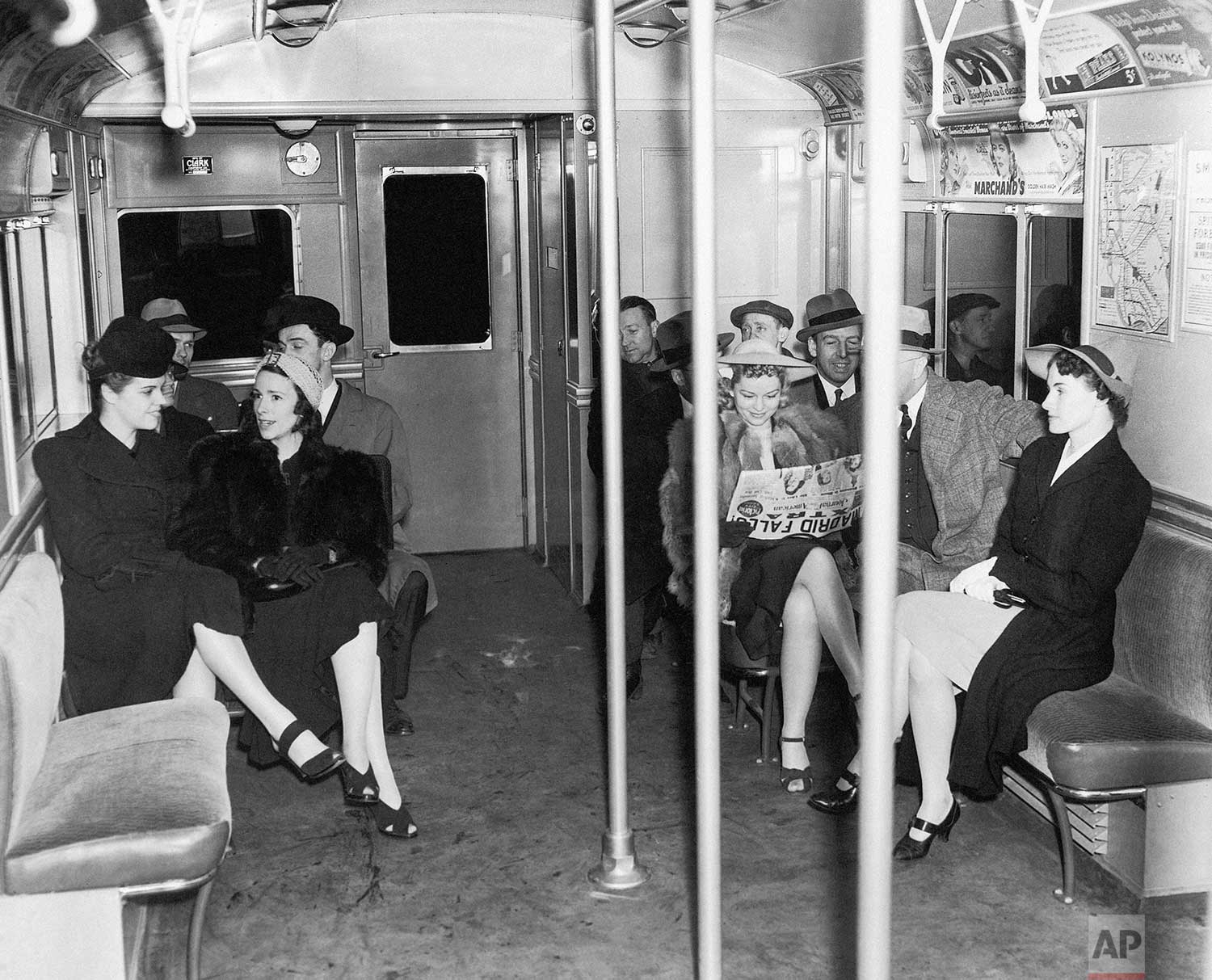
Air conditioned and equipped with upholstered green mohair cushions, a new streamlined luxury car of the BMT lines made its inaugural run in New York, March 28, 1939. This group tried out the comforts of the new car which will be placed in operation March 30. Sound-deadening and shock-absorbing devices are part of the new equipment. (AP Photo)
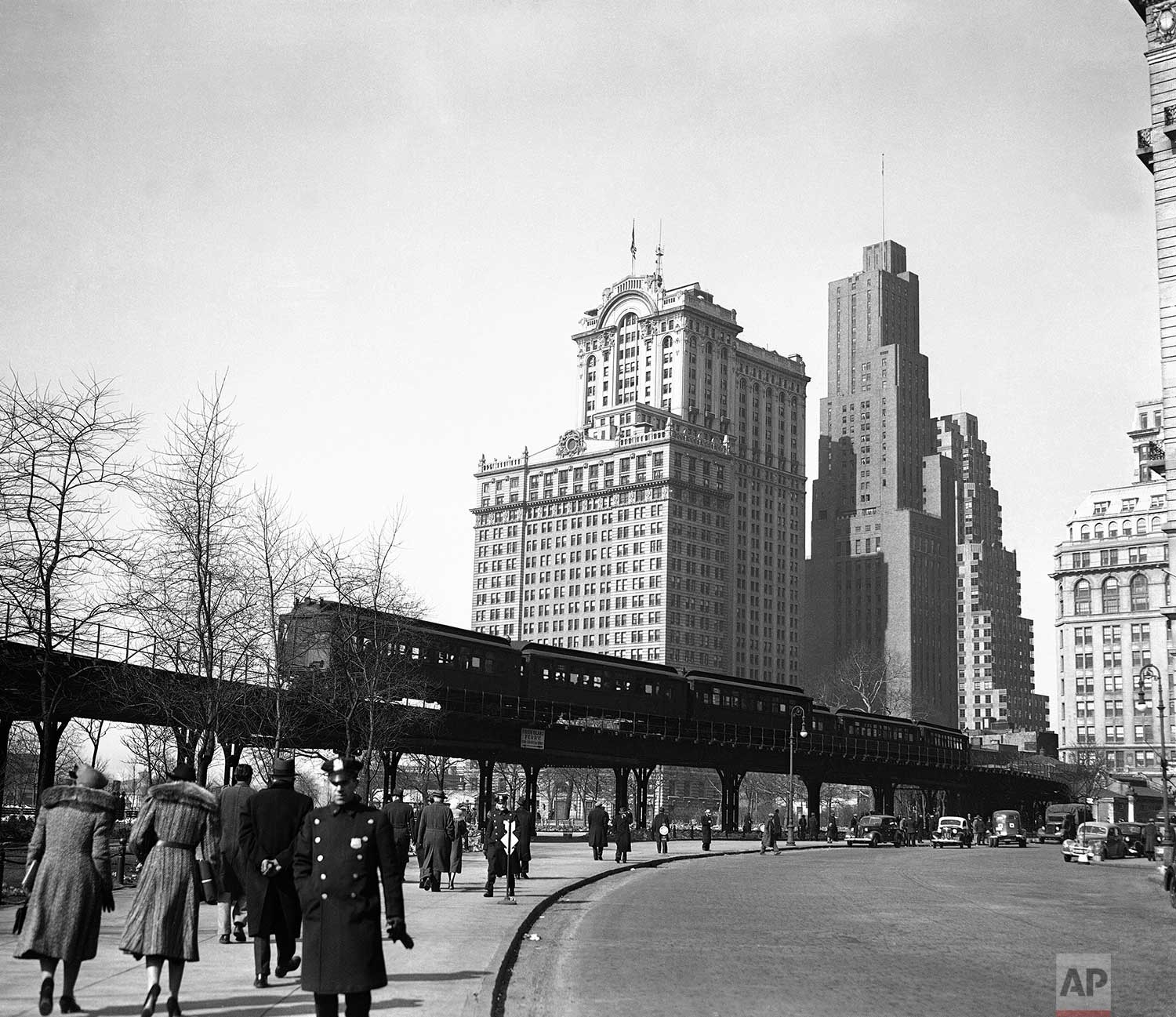
The Ninth Avenue "El" or elevated, is shown looking north along State Street in New York, Feb. 22, 1940. The transit commission has authorized the condemnation of the structure. (AP Photo)
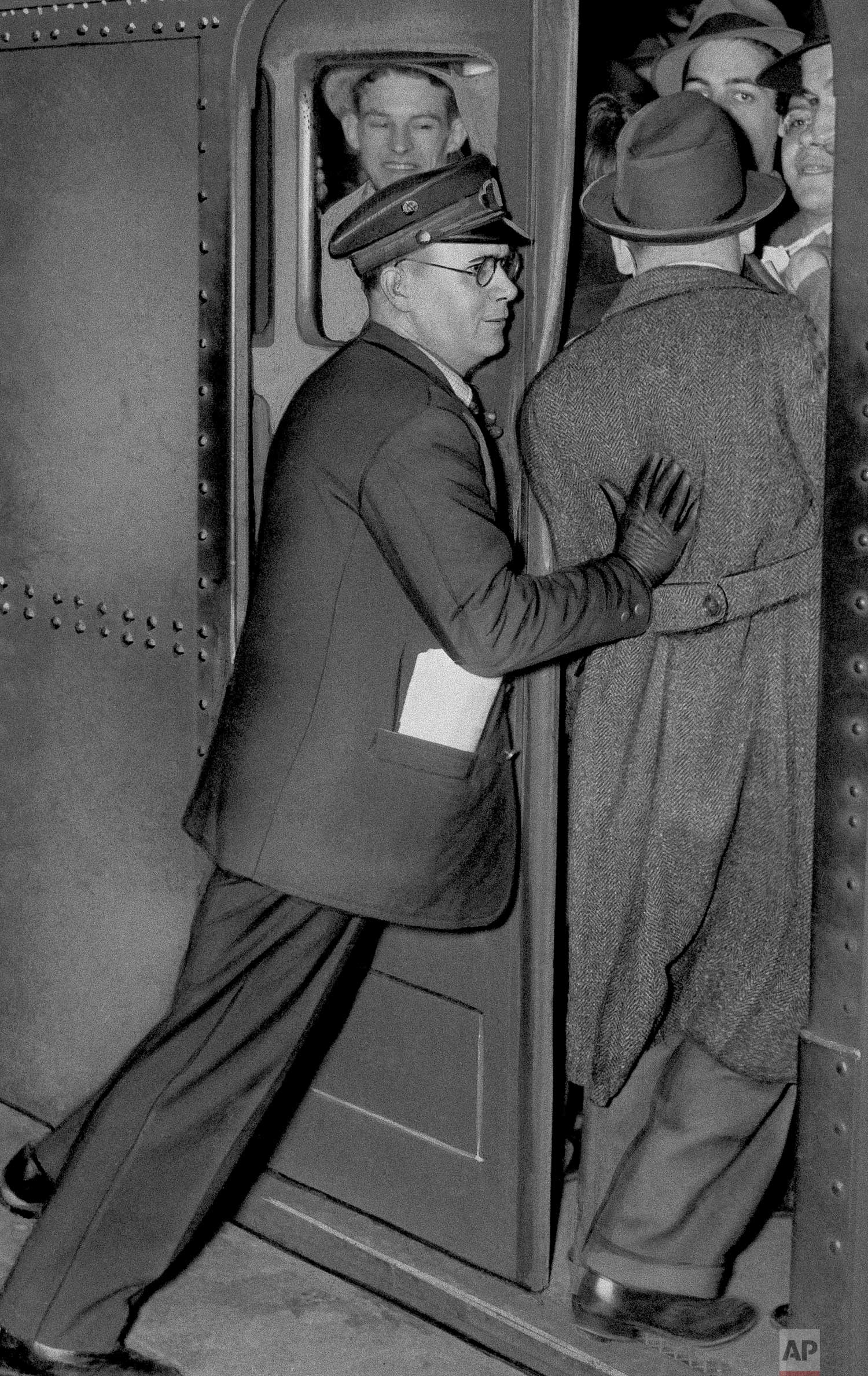
New York City subway worker squeezes one more onto a train car, May 5, 1943. (AP Photo)
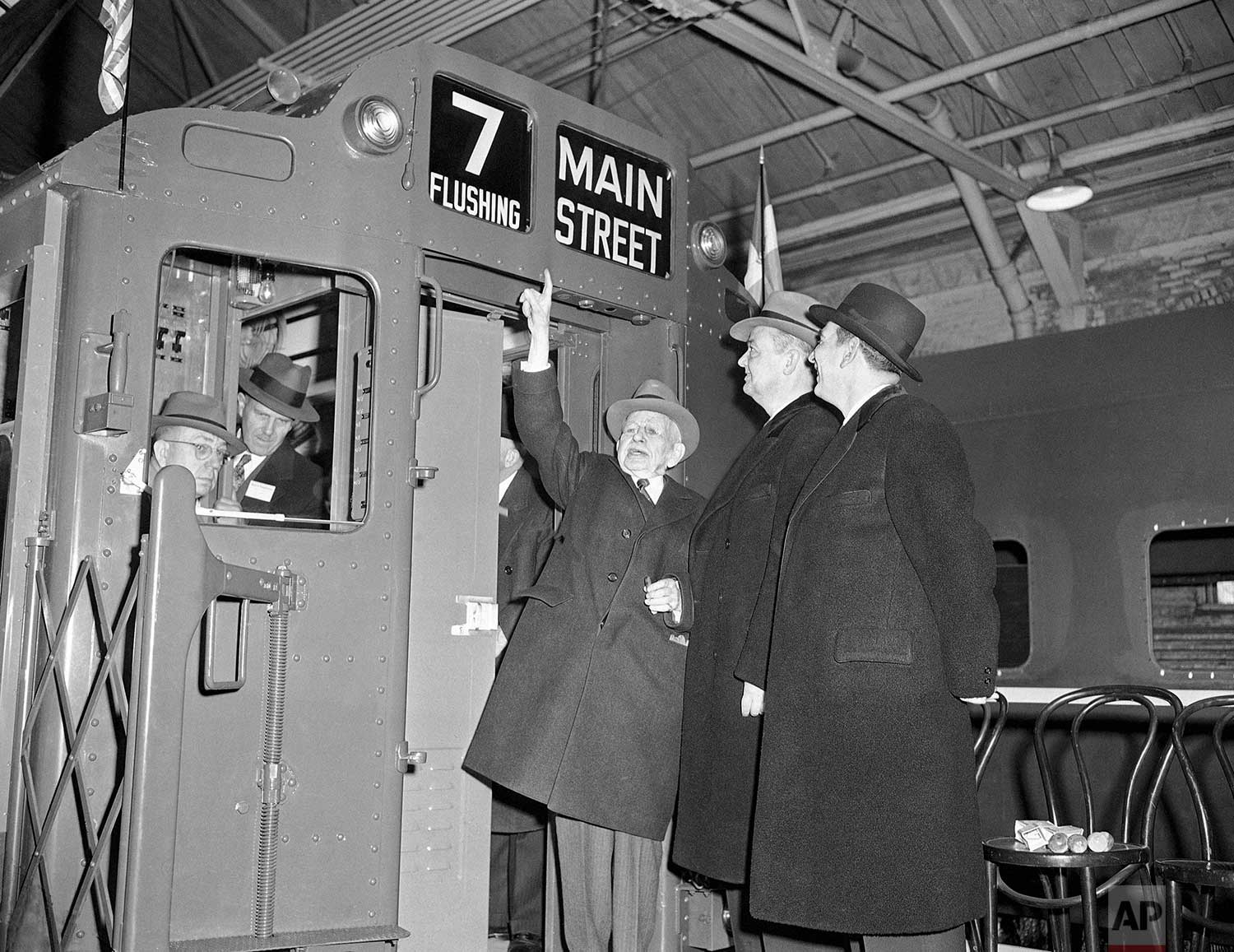
Vincent R. Impellitteri, right, acting mayor of New York City, and Brooklyn Borough President John Cashmore (second from right), inspect the first completed subway car of an order for 750, at the American Car and Foundry Co., Berwick, Penn., Feb. 20, 1948. C.J. Hardy, Sr., company chairman, points out a feature of the new cars. (AP Photo/HG)
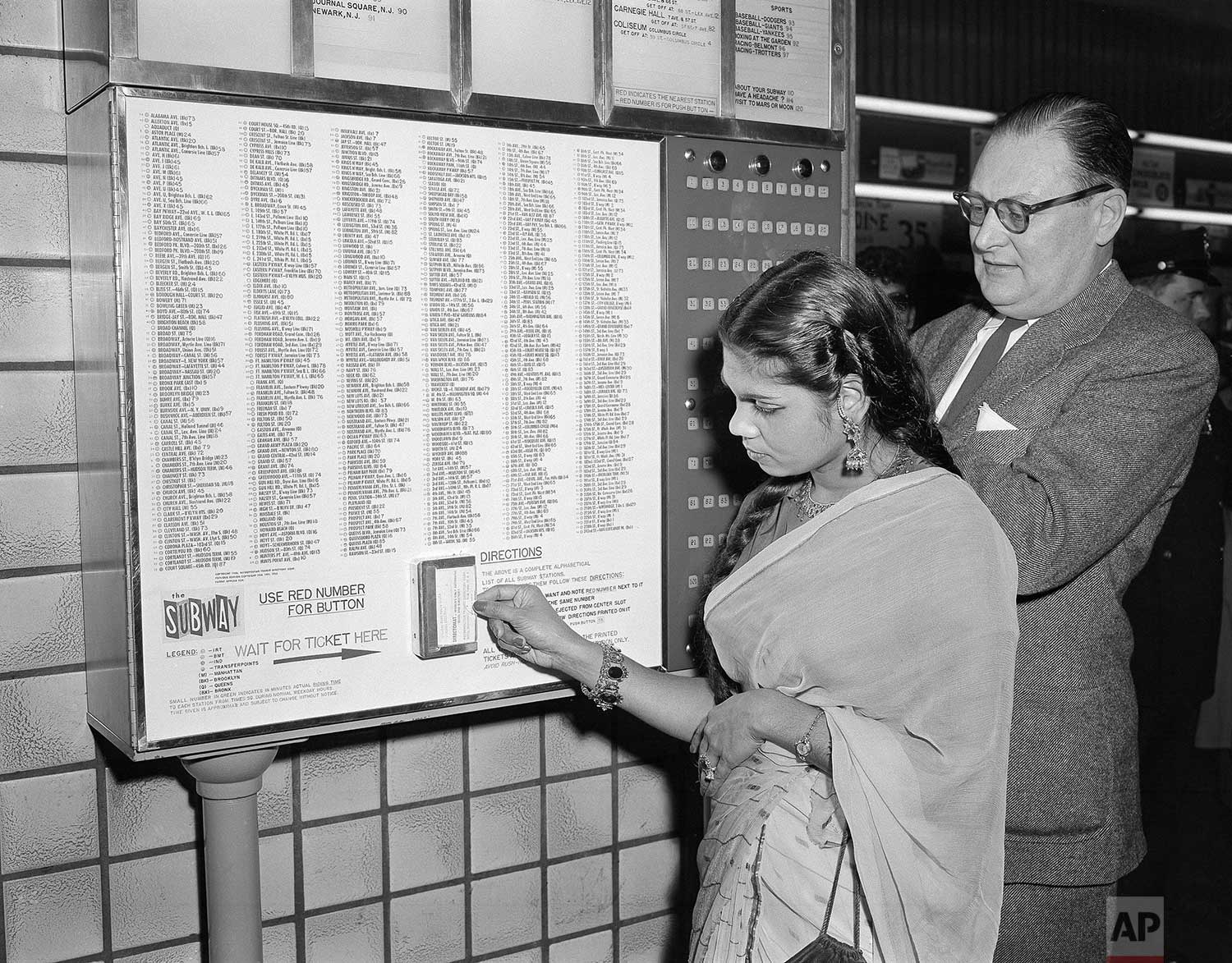
Razina Atiqullah, 23, of East Pakistan, tries out the directomat, a new device installed at the Times Square subway station in New York, April 30, 1956. (AP Photo)
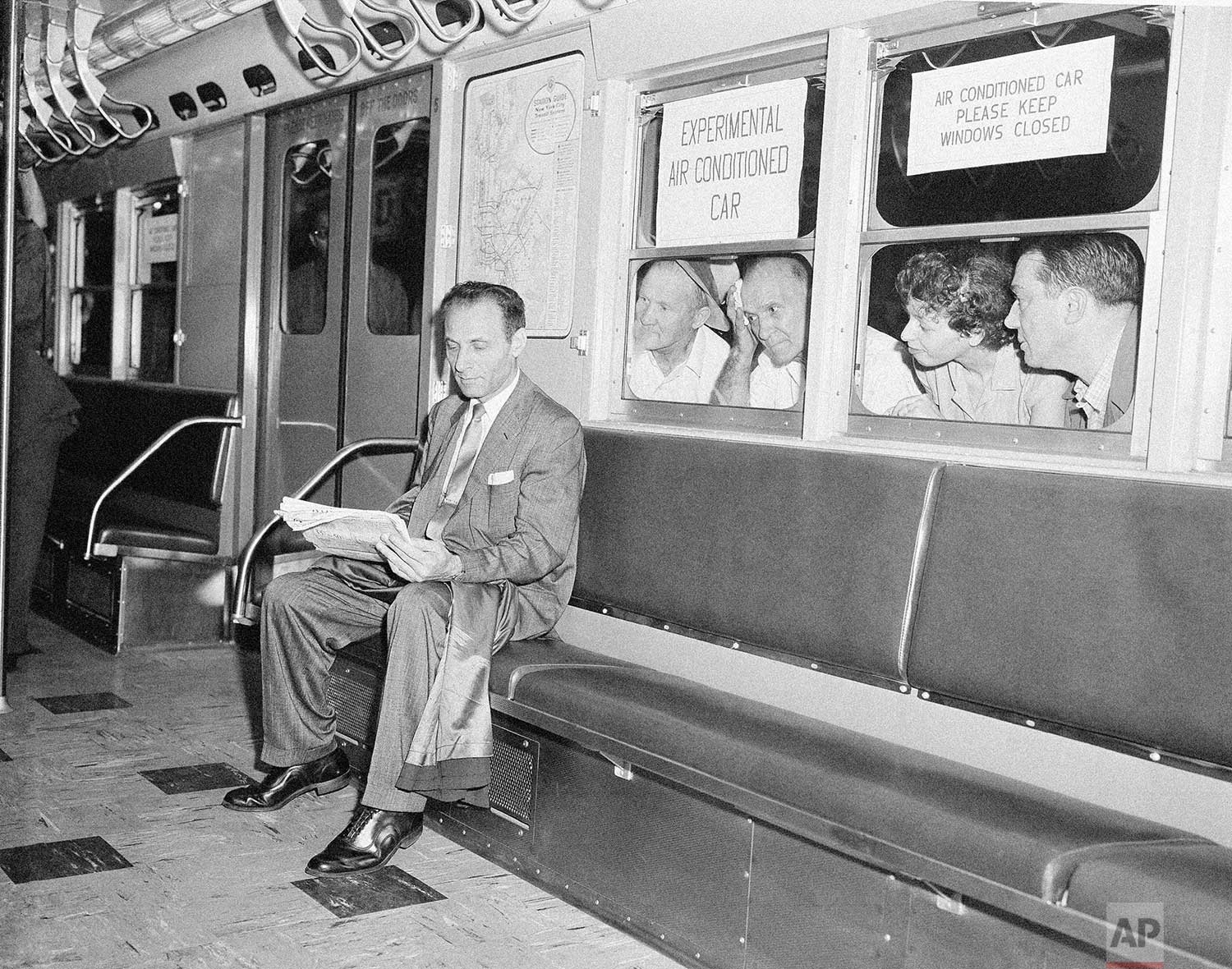
While other subway passengers perspire in the warm and humid underground station, Paul Forman appears cool and comfortable in the experimental air conditioned train which made its first run in New York City, July 9, 1956. The test run, which included six air conditioned cars and two old cars, was made on the East Side IRT line. The new cars provide soft music, modern design, air cooling units, deodorizers and filters to reduce germs. When the train left Grand Central Station the temperature was 89-degrees in the old cars while the new cars registered 76.5 degrees. (AP Photo/Harry Harris)

Crowds of homebound New Yorkers move slowly toward the Grand Central station of the IRT's Lexington Avenue line after leaving the crosstown shuttle during the peak of the rush hour, July 16, 1956. Flooding from water poured on the Wanamaker department store building fire has disrupted Lower East Side subway service and forced straphangers to use West Side lines. At Grand Central, where riders switched from west to east side lines, crowds were described as twice as heavy as normal. (AP Photo/Tom Fitzsimmons)
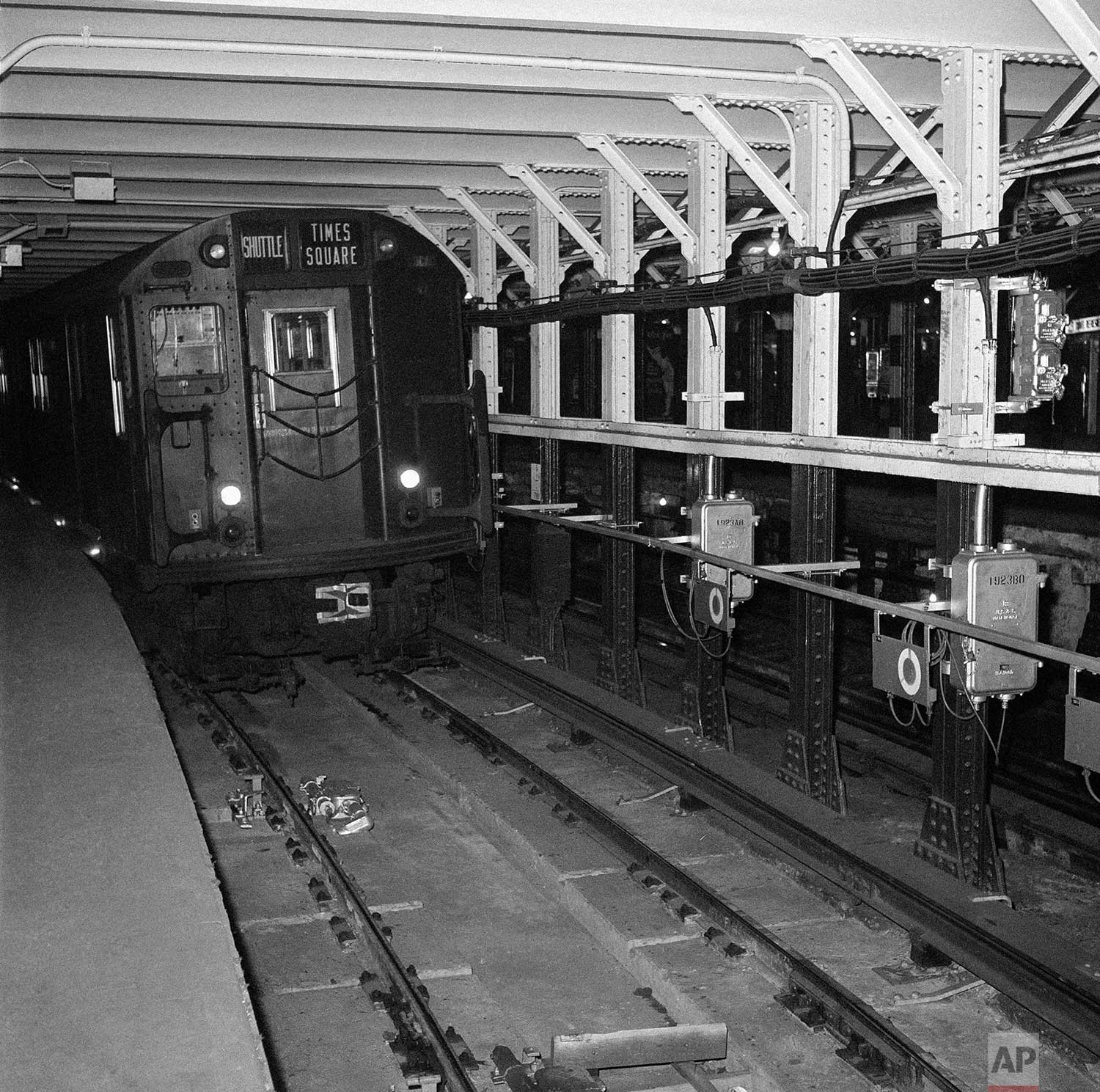
This is a head-on view of the automated subway shuttle train, scheduled to operate between Grand Central Station on New York's East Side and Times Square on the West Side of Manhattan, Dec. 13, 1961. The train is slowing to a stop at the Times Square station during one of a series of test runs Circles on posts at right are proximity deductors which monitor speed of the approaching train. The crewless train, operated entirely by electronic controls, is scheduled to begin operation in a few days and is the cause of a strike threat by the Transport Workers Union. (AP Photo/Anthony Camerano)
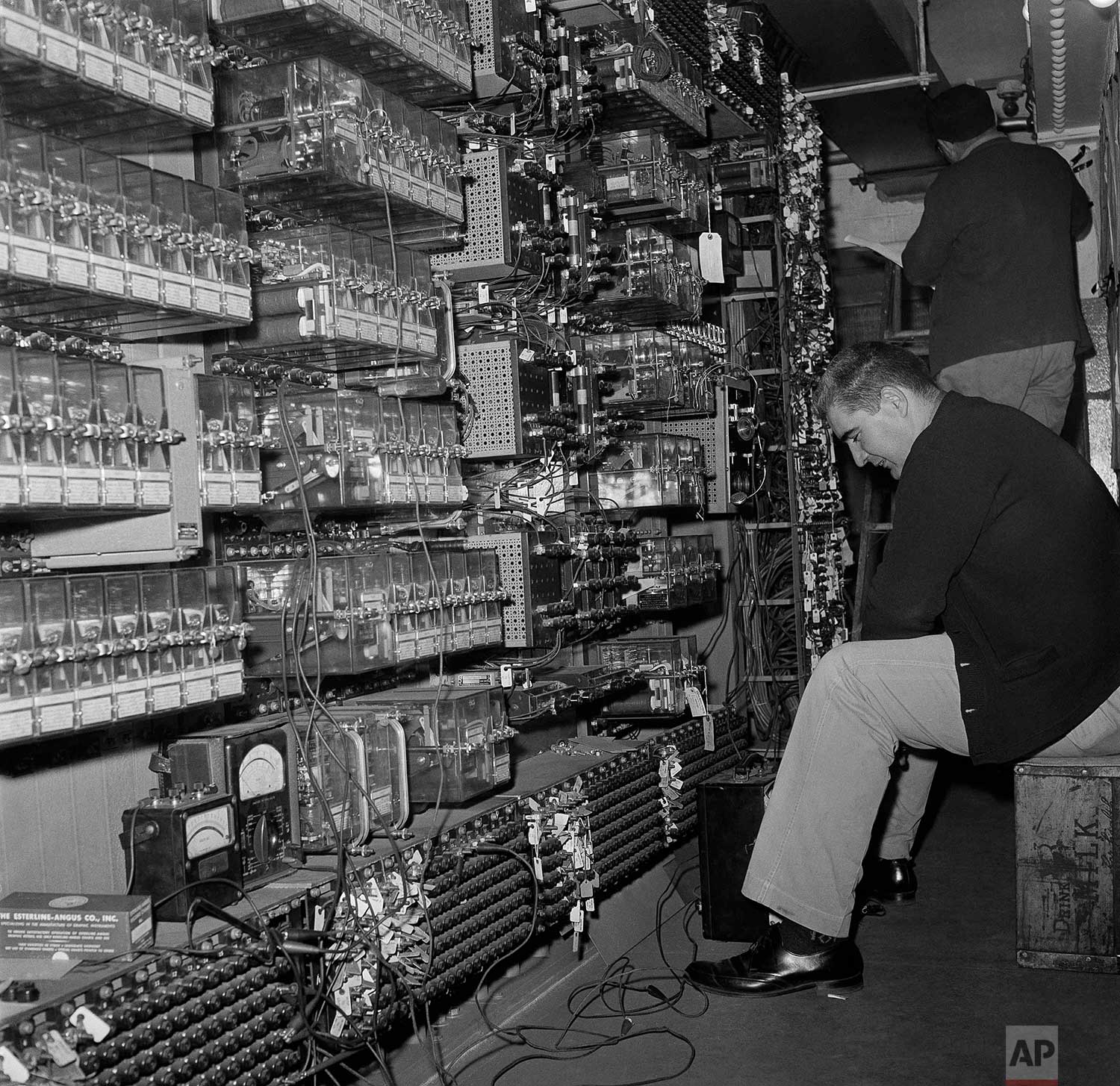
Arthur Luhrs, signal engineer for General Railway Signal Company of Rochester, N.Y., checks the panel in relay room at Grand Central Station for the crewless subway train which will soon be operating in New York, Dec. 13, 1961. A relay room is necessary for each track on which the completely electronically-controlled train will operate. The subway, without engineer and conductor, is scheduled to shuttle between Grand Central station and Times Square in mid-Manhattan. (AP Photo/Anthony Camerano)
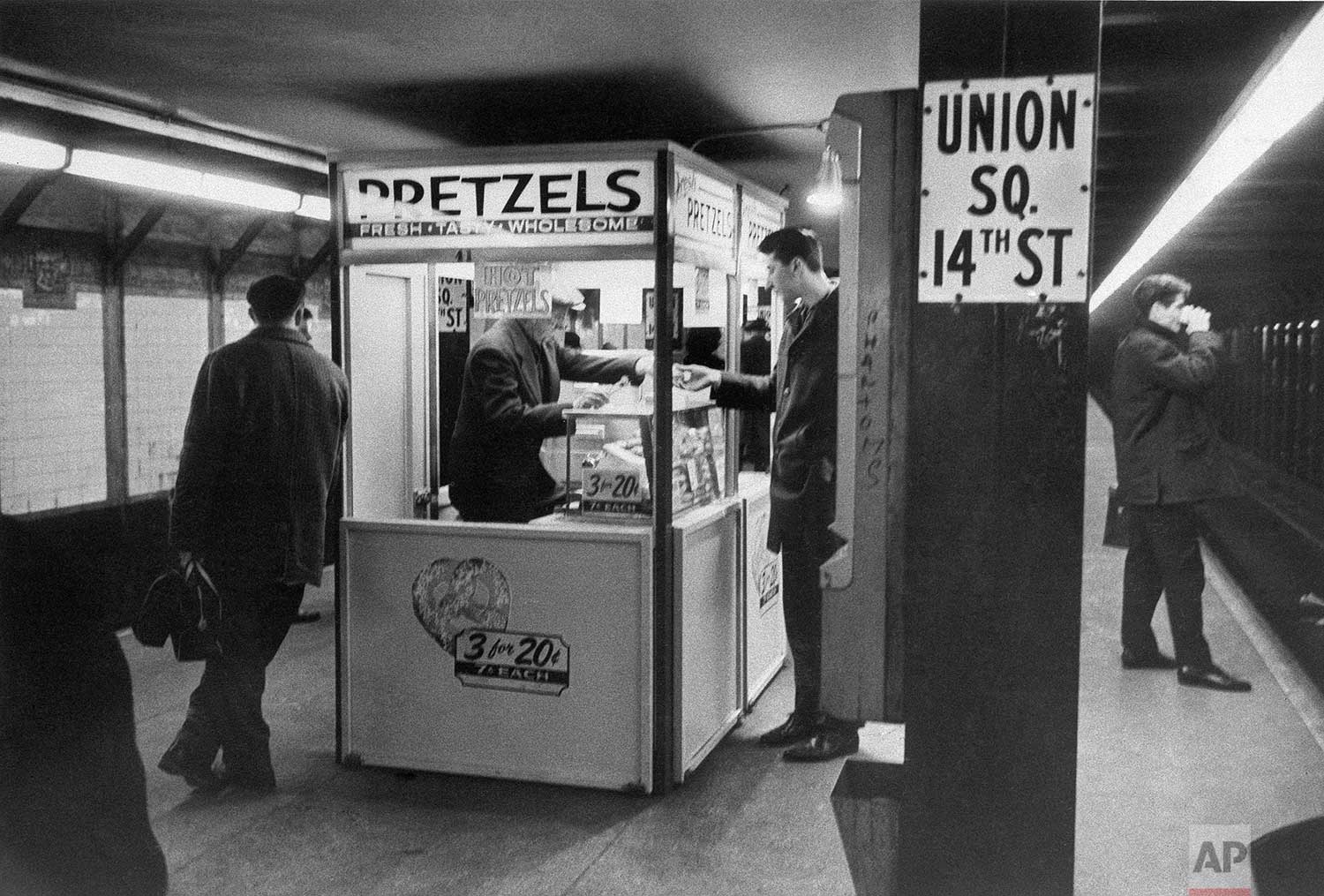
A New Yorker need never step outdoors to still his hunger or satisfy his needs for goods. He can simply take the subway, that vast maze of rails that has been operating since 1904, and spend the day eating and shopping. He can buy practically everything from a stick of gum to a set of furniture, dine at the below-the-street luncheonettes, and even make a deposit at one of the banks that are to be found at Rockefeller Center, Port Authority Bus Terminal, Pennsylvania and Grand Central Stations. Here, a man buys a pretzel at Union Square station, Feb. 13, 1962. (AP Photo)
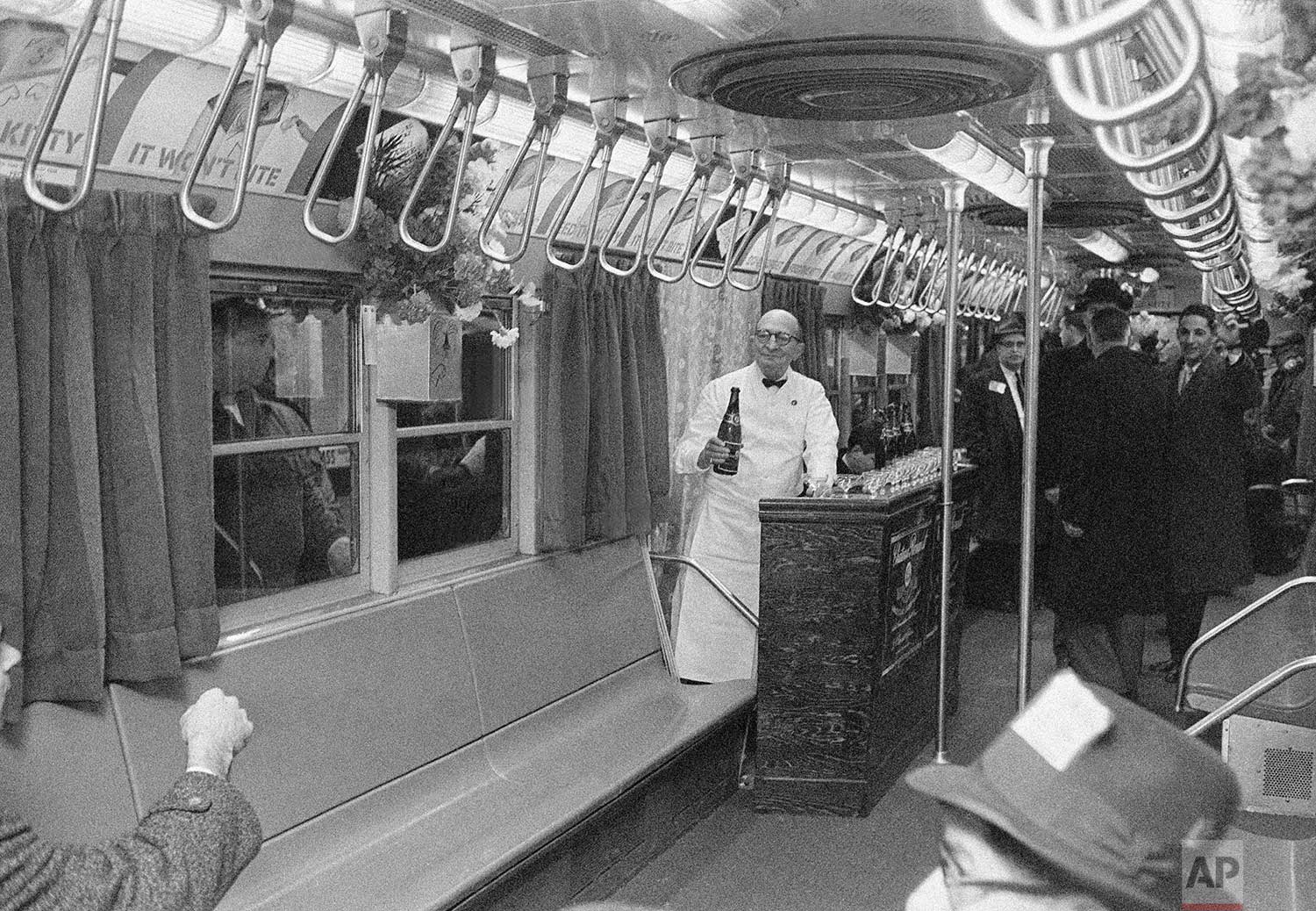
Joseph E. O'Grady, right, member of New York City's Transit Authority, stands at a bar installed temporarily in the Authority's "dream car" in New York, Jan. 17, 1962. The car, which had fresh flowers, carpeting, draperies and pastel lighting, made a special trip as part of a nine-car train on the city’s subway lines from Times Square to South Ferry and back. It was to help publicize a clean subways campaign to the Young Men's Board of Trade New York City Junior Chamber of Commerce. (AP Photo/John Rooney)
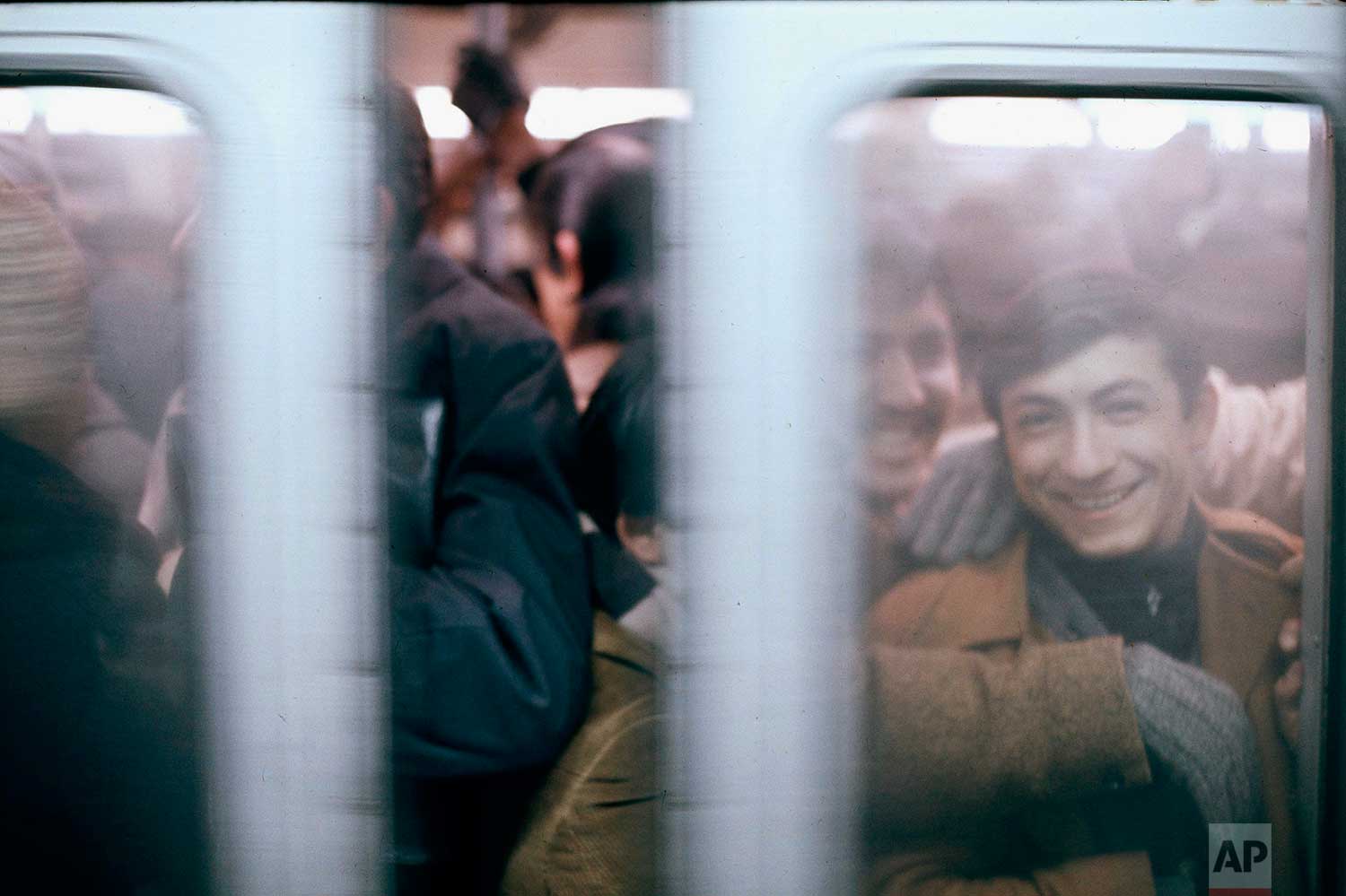
Some passengers show good humor as they pack themselves like sardines in a subway car at the height of the rush hour in New York City, 1966. (AP Photo)
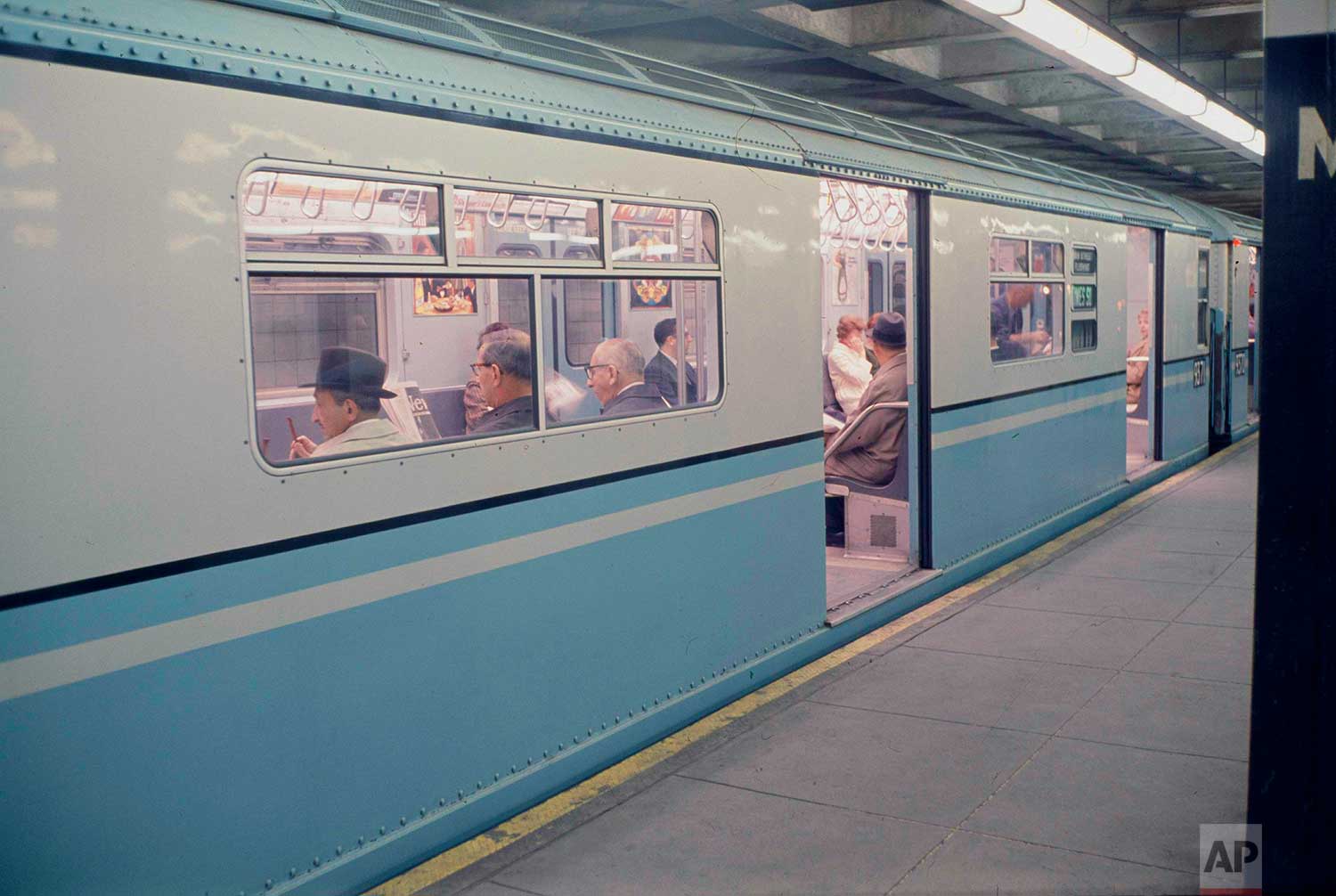
A New York City subway train, the Manhattan-bound number 7, is pictured on the Main Street, Queens platform with doors open waiting for passengers, 1966. (AP Photo)
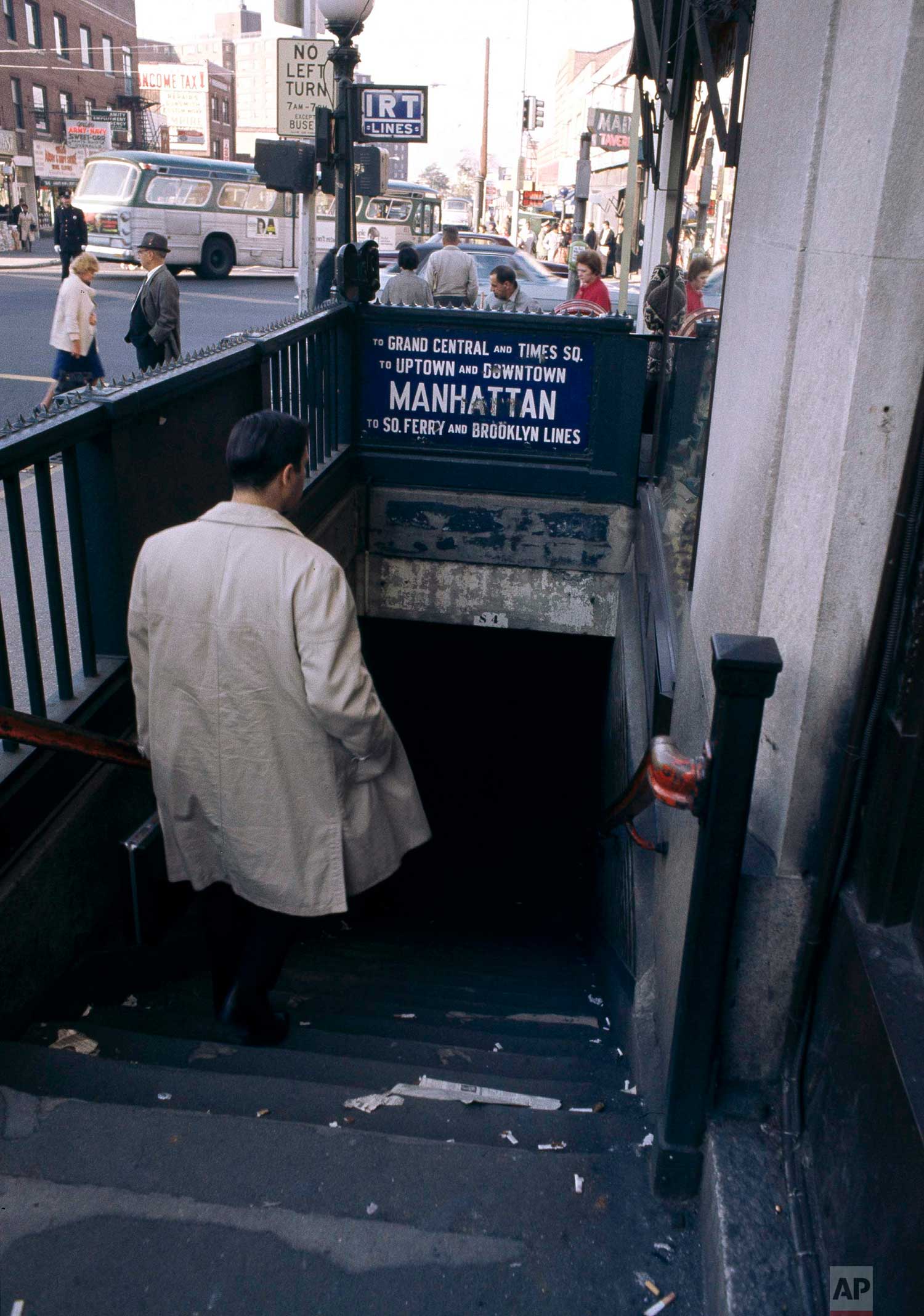
A man heads underground for a ride on the subway, in New York City, 1966. (AP Photo)

An unidentified conductor for an IRT subway train is shown on the job in New York, July 10, 1970. (AP Photo)
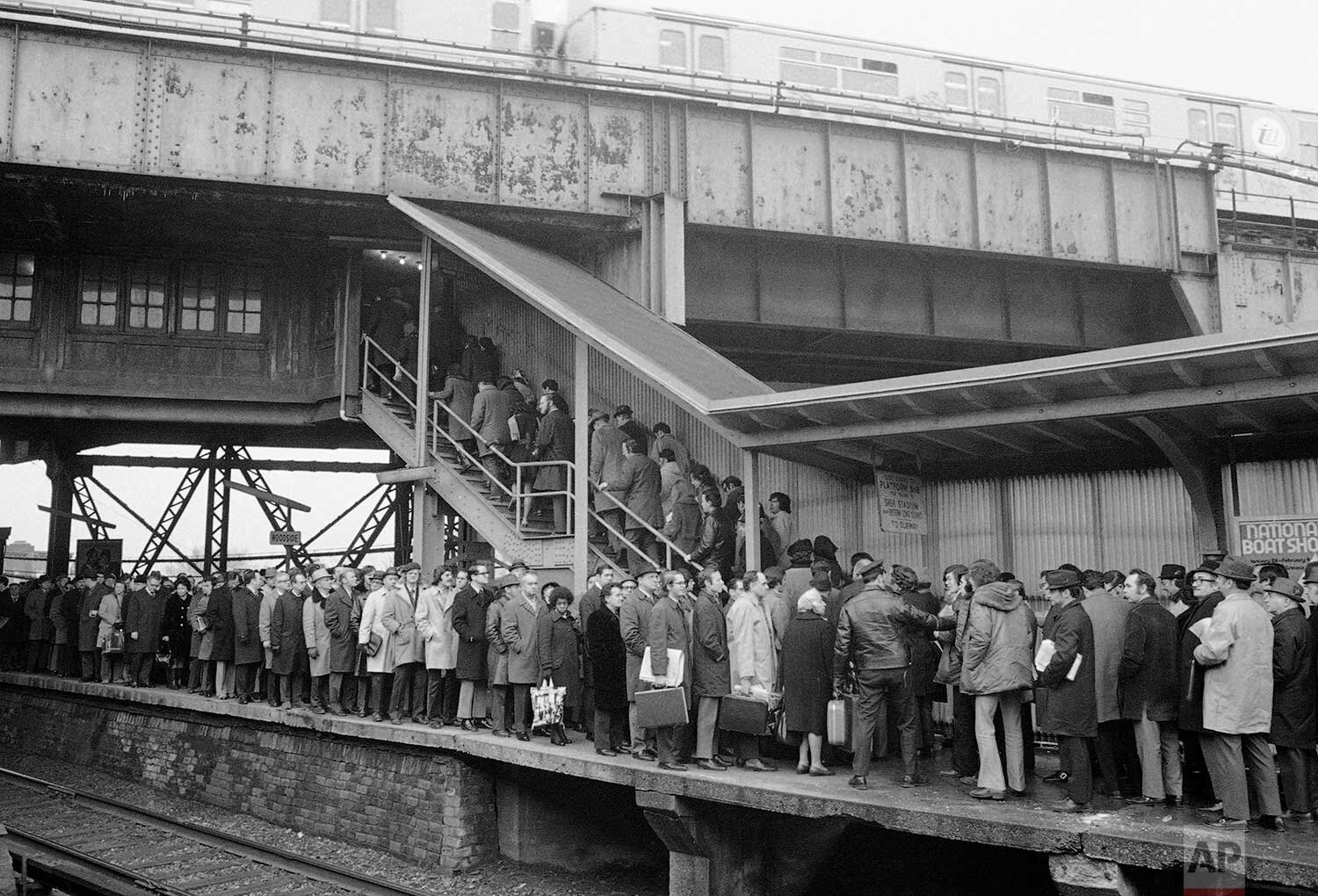
Long Island Railroad commuters get in line to catch subway trains at the Woodside station, Feb. 8, 1973, in the Queens borough of New York. The Penn Central strike closed LIRR tracks into Penn Station, forcing LIRR commuters to use the subways in Queens and Brooklyn. The Penn Central strike affected about 50,000 commuters on the LIRR, which itself was struck earlier this year. (AP Photo/Anthony Camerano)

A New York subway rider inserts a token into a turnstile at the Rockefeller Center station, June 1980. (AP Photo)
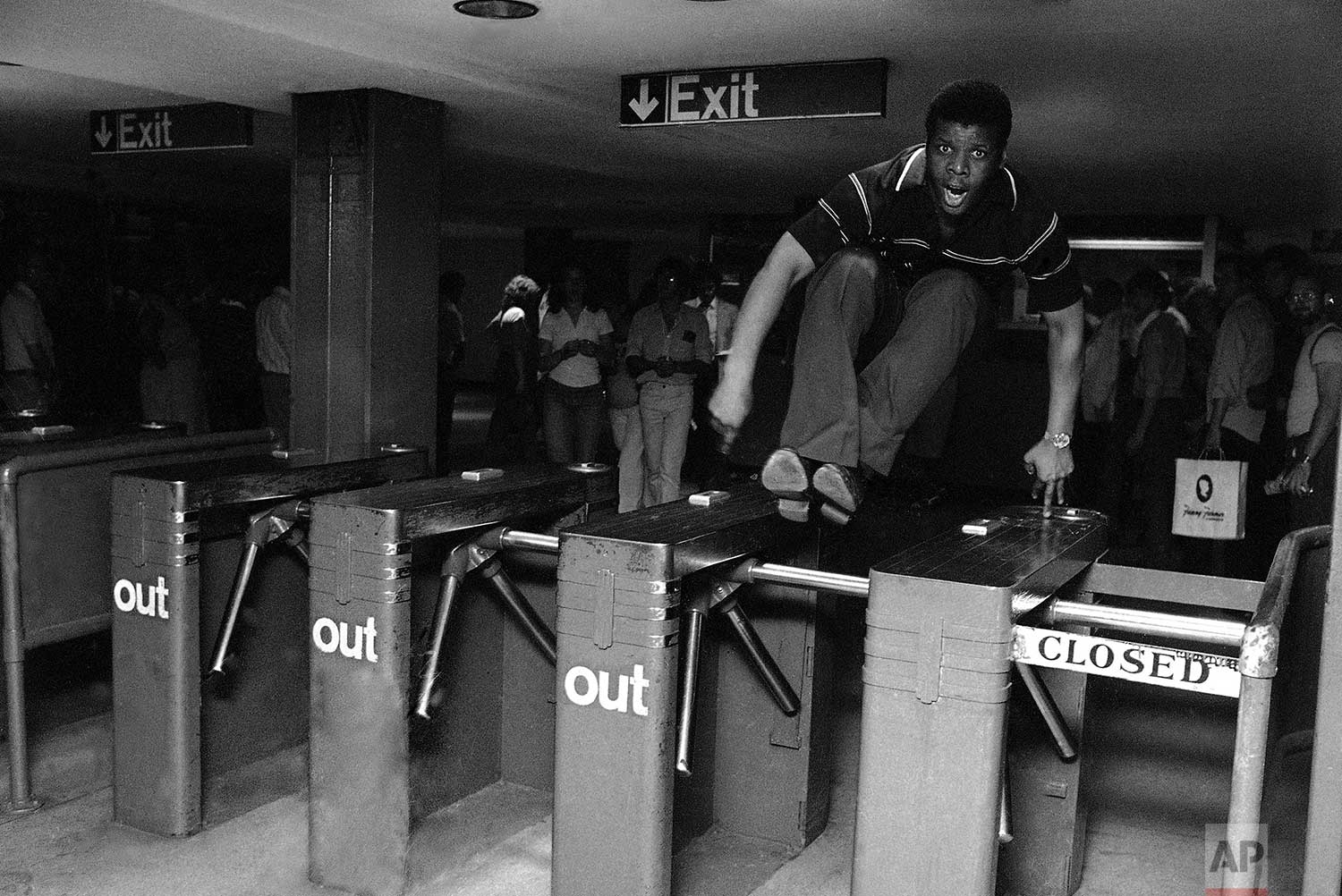
Confusion prevailed among New York City subway riders when the long-awaited 60-cent fare took effect at the stroke of midnight in New York on Friday, June 27, 1980. A couple of riders finds their own way to beat the fare increase; one by going over the turnstile at the Rockefeller Center subway station. (AP Photo/Ron Frehm)
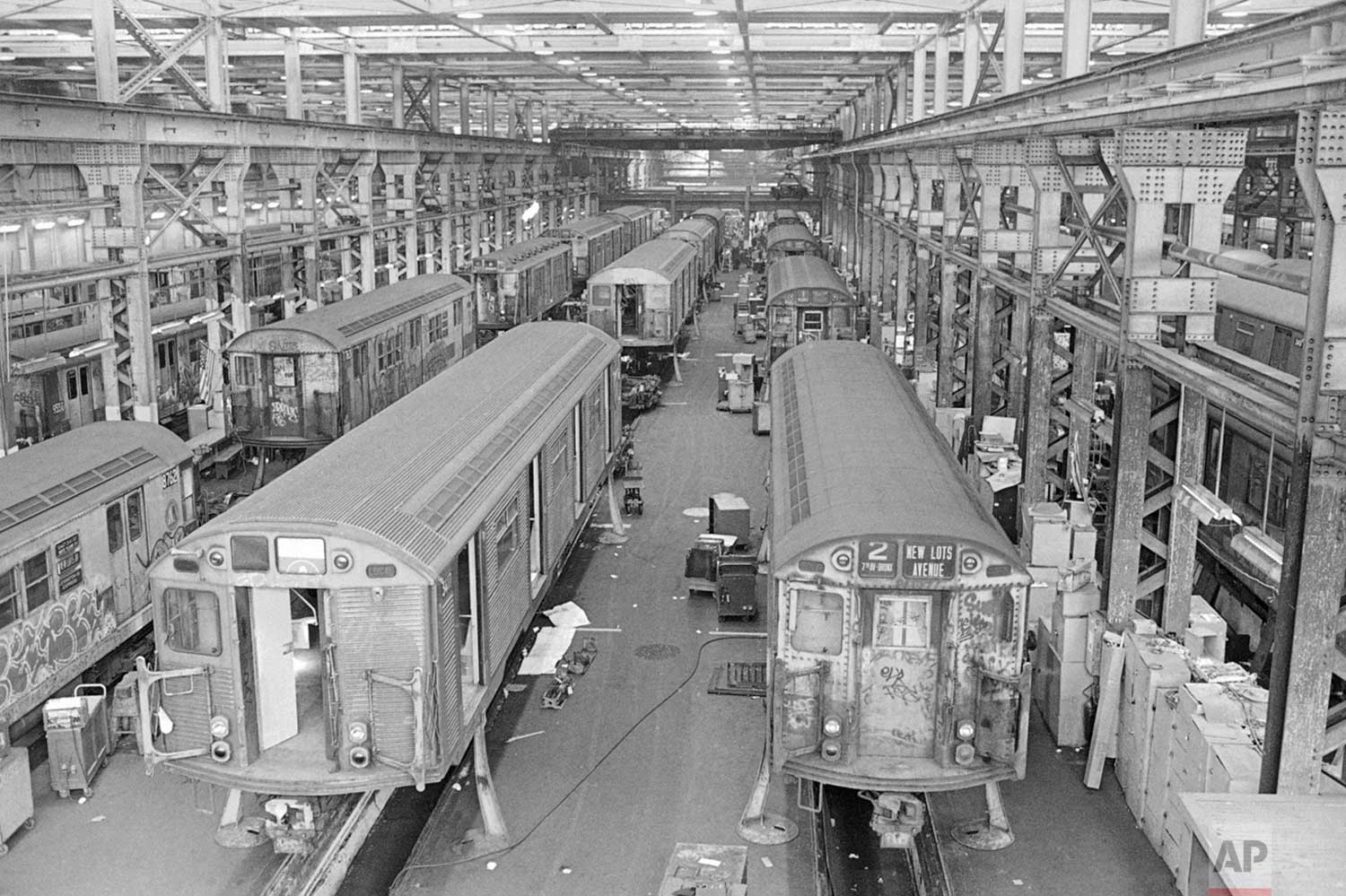
One of the large maintenance shops for the New York subway system is packed each and every day with trains in disrepair in New York on March 11, 1982. One out of every 10 cars is out of service at any given time. “The equipment is terrible,” says a supervisor who daily oversees the operations of the subway. (AP Photo/M. Reichenthal)
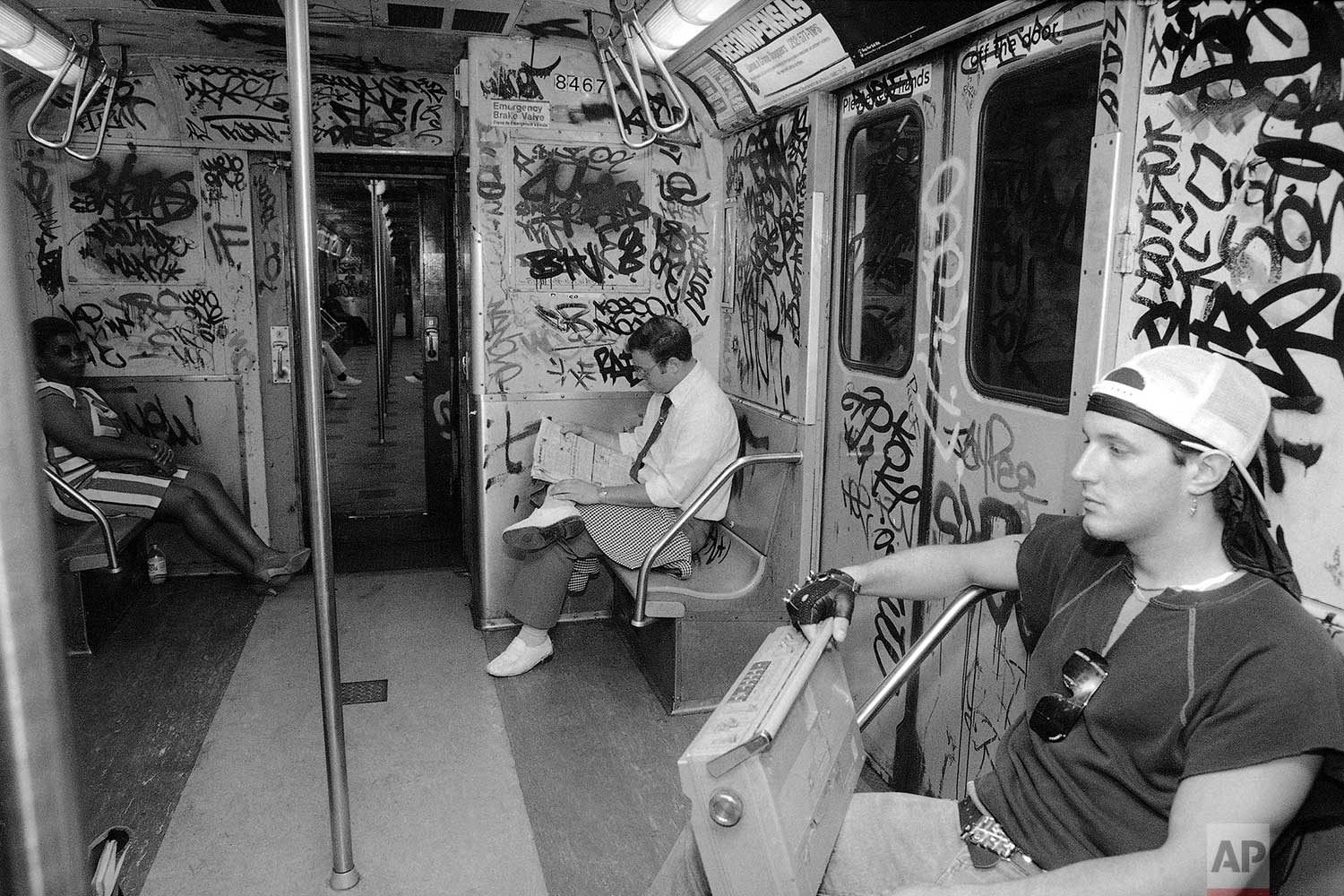
New York City Transit Police Officer Jeremiah Lyons, center, as a decoy cop reads his newspaper on board the city subway while he carries on his act as a fare-paying passenger wearing visible gold jewelry on July 25, 1985. His backup Police Officer James Nuciforo, right, listens to his “Ghetto Blaster” radio and is ready to move in for an arrest when the crime occurs. Two other members of the backup team are in the adjacent subway car. (AP Photo/Warren Jorgensen)
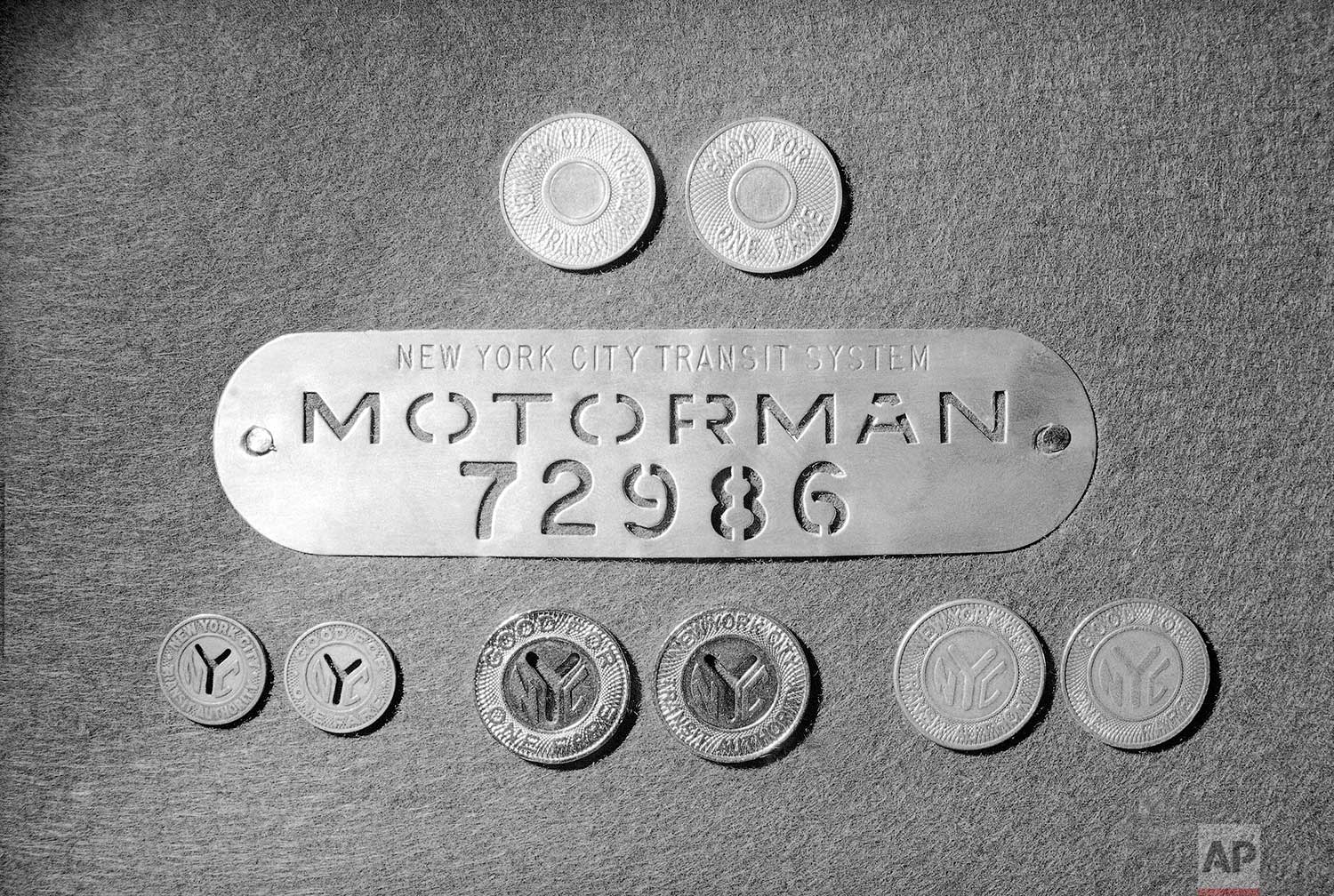
New brass tokens, top row, are contrasted with older versions below at the Transit Authority headquarters in New York on April 17, 1986. The new tokens have a stainless steel “bull’s-eye” center. (AP Photo/Ron Frehm)

Japanese artist Hiroshi Soga rides a subway on his way to a performance in New York on June 14, 1989. Soga, in New York from Tokyo to exhibit his paintings and other creations, also performs interpretive dance based on ancient themes dressed in a traditional geisha-style costume. (AP Photo/Tom Stathis)

Mayor David Dinkins, left, and entertainer Cab Calloway, right, take a ride on the A train from Harlem to Radio City Music Hall to officially kick off Grammy Week in New York on Feb. 18, 1991. Seated behind is Manhattan borough president Ruth Messinger, left and director of government and community affairs for NYCTA Miles Matthews. (AP Photo/Alex Brandon)
